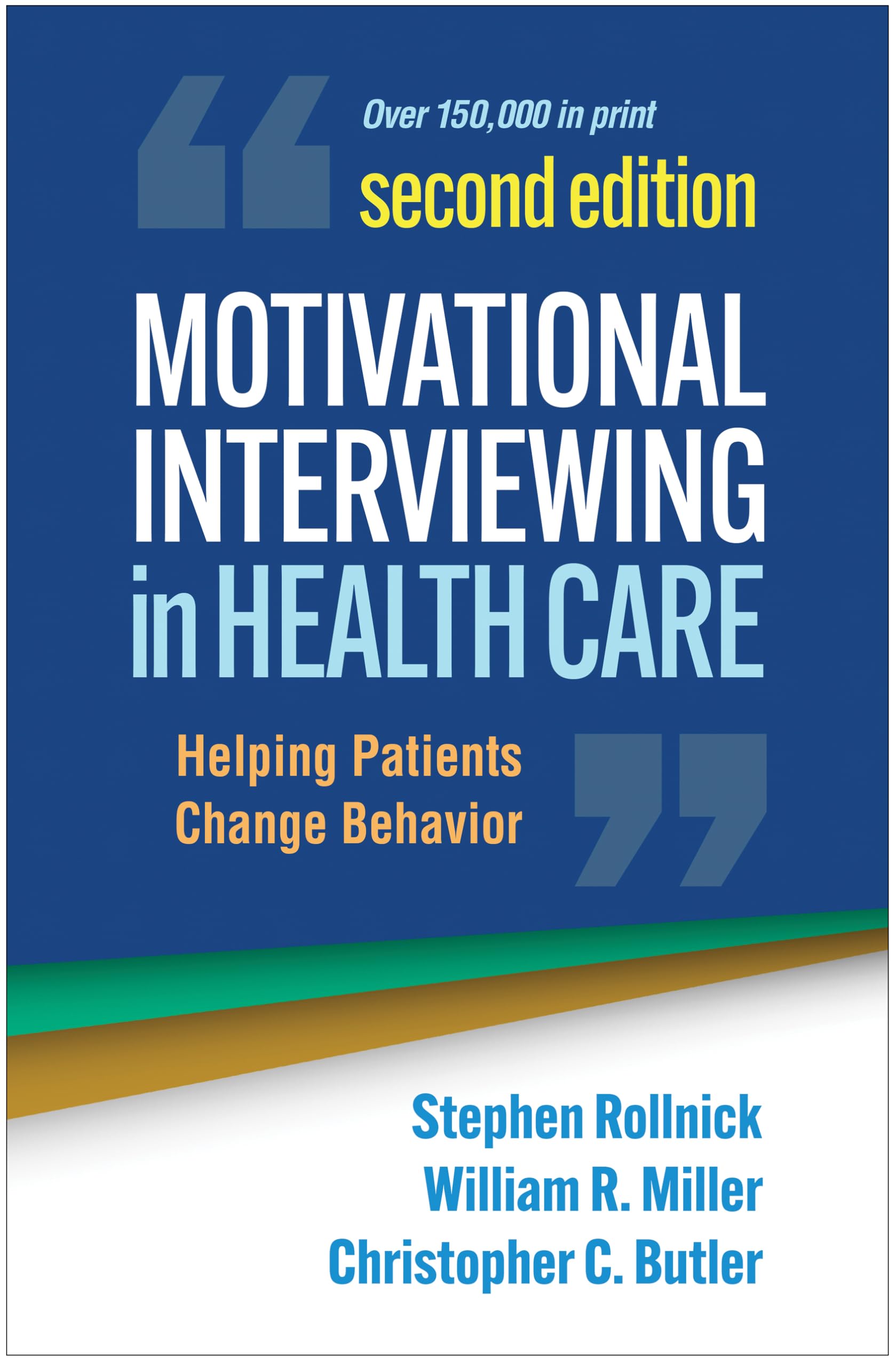

Motivational Interviewing in Health Care: Helping Patients Change Behavior (Applications of Motivational Interviewing Series)
Description
Motivational Interviewing in Health Care: Helping Patients Change Behavior (Applications of Motivational Interviewing Series)





Reviews
R**W
A great resource for healthcare professions
A great resource for clinical exercise physiologists, medical and other allied healthcare professionals. Clear, concise and practical examples to apply motivational interviewing skills.
K**N
DARN good book with lots of PEP (provide - elicit - provide)
Book report: Motivational Interviewing in Health Care – Helping Patients Change Behavior by Stephen Rollnick, William Miller, and Christopher Butler. I read this book on the recommendation of doctors Jordan Feigenbaum and Austin Baraki from YouTube’s Barbell Medicine, as I thought it might help me with my coaching (and then later, as it turned out, with my father as he went through some health challenges). It’s extremely readable and has a much broader appeal than for just medical professionals. With a different introduction, it could even be tailored to the self-help crowd, like “how to have more effective conversations with your spouse” etc.The book initially lists three communication styles: following, guiding, and directing, and notes that all three have their situational use, but the guiding style is often the most effective of the three for affecting change in behavior. (This fits my personal experience.) Like any book of its genre, it likes acronyms and mnemonic codes. My favorites were “RULE” – which describes the basic clinical method – “Resist the Righting Reflex,” “Understand the Patient’s Motivations,” “Listen to Your Patient,” “Empower Your Patient” and “DARN” – which describes some possible elements of the change talk you are trying to elicit from the person you are trying to help – “Desire,” “Ability,” “Reasons,” “Need.” The idea is to get the person needing the help to make the statements of change, where there is no resistance. You say it, and they think of counterarguments. They say it, and you summarize it to let them know you heard them correctly.Overall, if nothing else, the book is a good example of structure. Each individual chapter has smaller paragraphs in italics that re-emphasize important sentences, there is constant interplay between theory and practice, and a summary at the end describes how the new information fits in with the previous, and where you will be going next. The authors seem to have great experience with how the interviewing style has been received by developing practitioners, and there are hints with how others have processed it. Thus, you get the image of preparing a “bouquet” of change statements – a collection of positive things the patient has said, perhaps in the midst of a field of not-so-positive “weeds.” The process of E-P-E (“elicit – provide – elicit”) gets better summarized as “nudge, listen, summarize, and repeat.”Finally, there is a real sense of authenticity in the conversational samples of exchanges between patients and practitioners. The examples don’t always go as planned, and the talk seems very familiar, like something you have heard or said yourself, but with a better method. There was a book called “How to Talk So Children Will Listen and Listen So Children Will Talk” that had cartoons showing a parent or teacher talking with a child, but it seemed whatever the parent said brought out hoped for behavior in the child. It’s easy with cartoons. Motivational Interviewing is real world, a positive, doable structure of many things you probably do on a sometimes basis systematized and explained in a very positive manner. Excellent (and reasonably sized, only about 200 pages) book.
A**Y
Pro Vaccine 2nd Edition. Was this edition sponsored by a pharmaceutical company??
Was hoping the text would be neutral in introducing and helping readers develop the skillset of Motivational Interviewing.Instead it focused early and intensely on coercing clients into taking all manner of vaccinations.Disappointing. Save your money and ask ai to do a summary of Motivational interviewing instead.
E**Y
Great book on the surface if you are teaching this topic to others
Started the book but never finished it as it was very dense. I found it difficult to apply the recommendations in real life as the text was so dense. A step by step guidebook would have been more helpful. Probably a good book if you are teaching a motivational interviewing course as a professor.
K**1
Connection
If you want to connect with people this book is valuable! Lots of examples throughout the book.
A**Y
Great book!
Very helpful for my line of work. I am a social worker at a health insurance company and this has already helped improve my work with members.
Common Questions
Trustpilot
1 day ago
3 weeks ago



